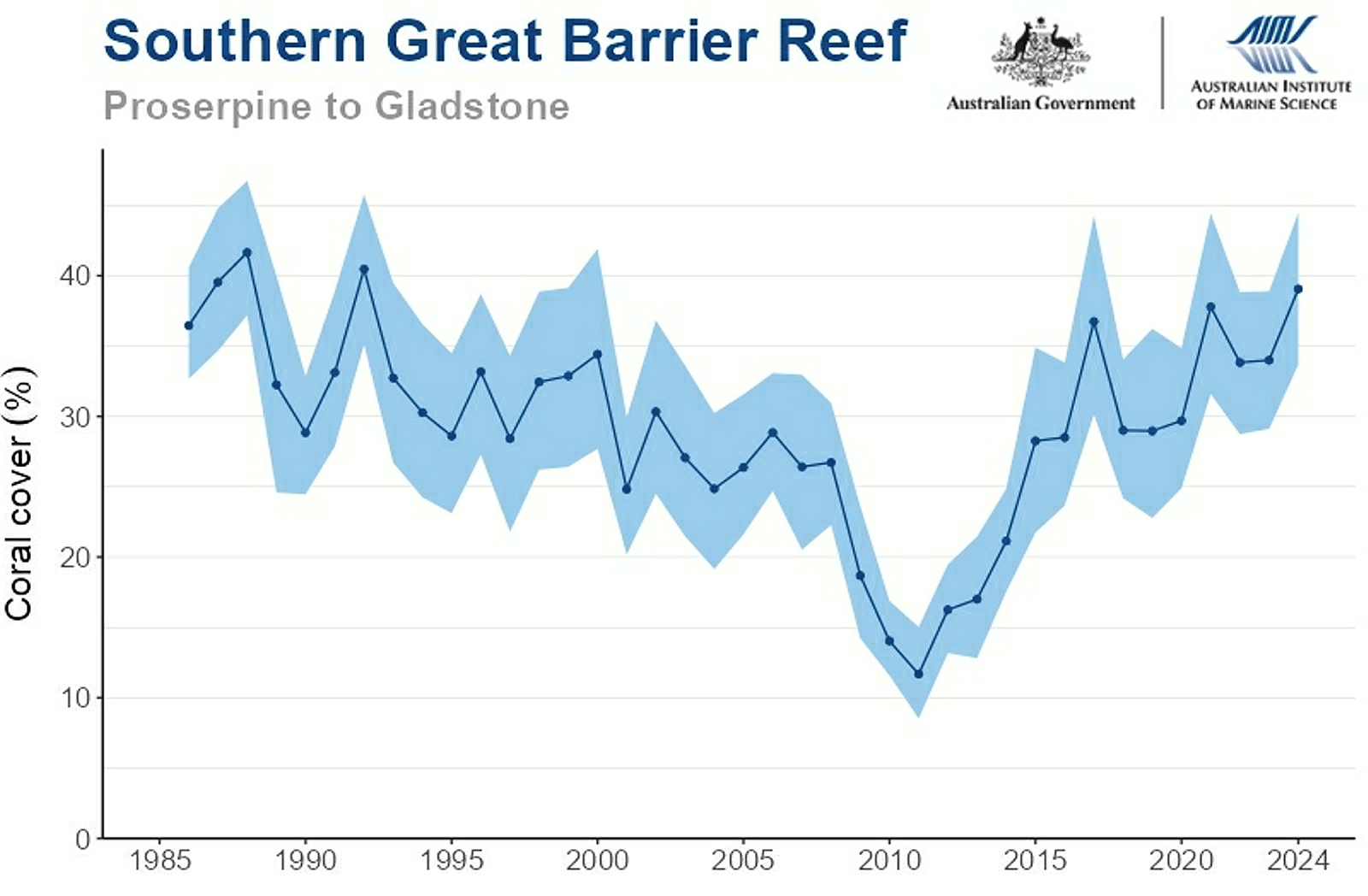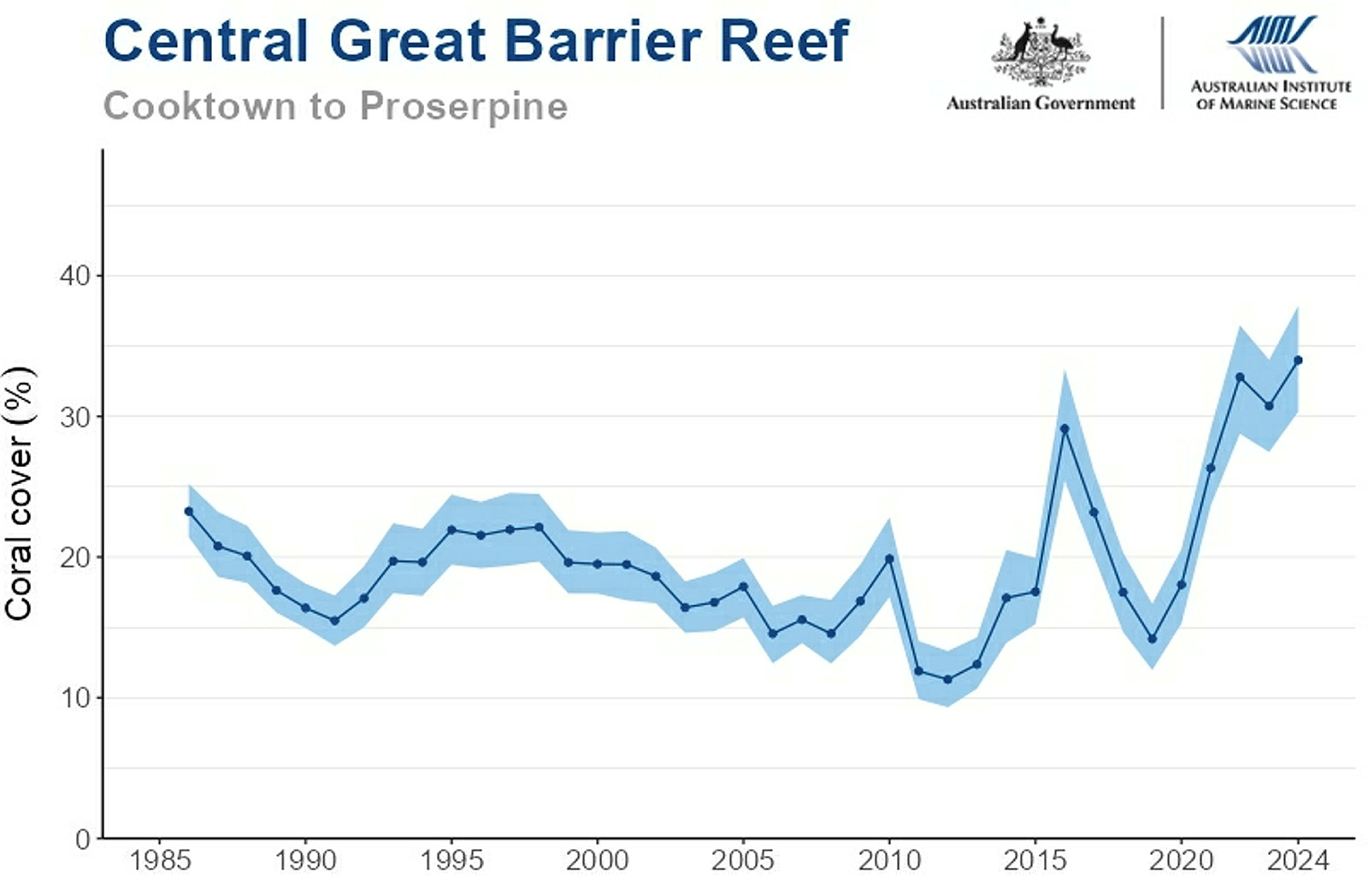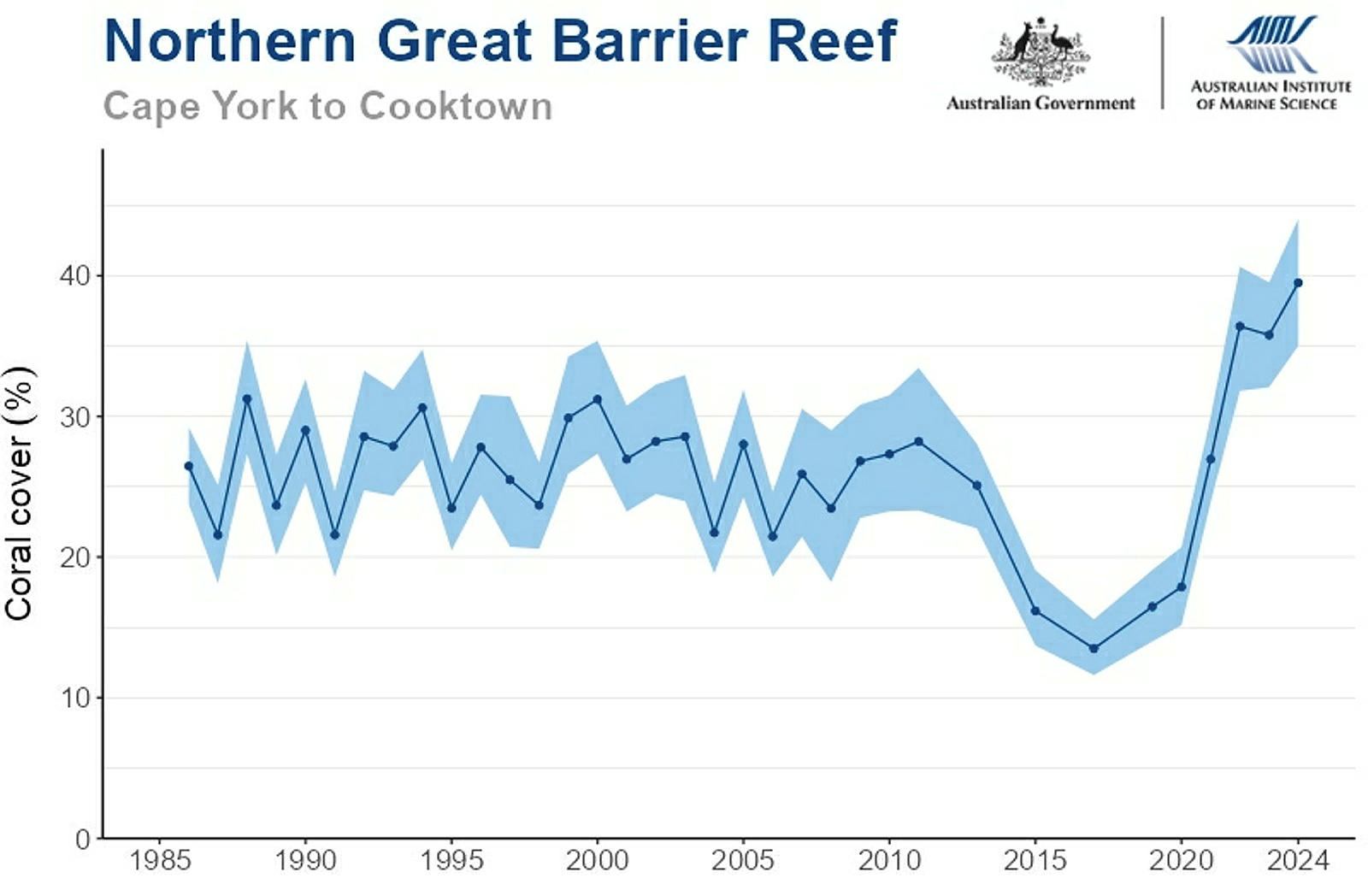
AIMS has been monitoring mass bleaching throughout the Great Barrier Reef since the early 1980s, and reefs in Western Australia since the early 1990s.
Mass bleaching events on the Great Barrier Reef have been documented with full-scale surveys in 1998, 2002, 2016, 2017, 2020, 2022 and 2024.
In Western Australia, mass bleaching events were documented in 1998, 2011-2013 and 2016.
Coral cover has increased in all three regions on the Great Barrier Reef and is at regional highs in two of the three regions.



Most of the underwater surveys contributing to these findings were conducted before and during the recent mass bleaching event, one of the most extensive and serious on record, and have not yet captured how many corals survived or died following the bleaching.
Surveys in the Central region were also completed before the passage of tropical Cyclone Jasper in December 2023.
The next Long-Term Monitoring Program (LMTP) survey season recommences in September and will capture impacts on coral cover from this summer’s mass bleaching event and the cyclones, with a full assessment complete by mid-2025.
AIMS’ LTMP leader Dr Mike Emslie said coral cover increases were a positive sign but did not reflect the potentially destructive consequences of the 2024 mass bleaching event.
“Climate change remains the greatest threat to the Reef because it drives these mass bleaching events. This most recent one was the fifth such event since 2016. These more frequent and extensive marine heatwaves will lead to shortened ‘windows’ for coral recovery. Recent gains, while encouraging, can be lost in a short amount of time,” Dr Emslie said.
“In many ways the Reef has had some lucky escapes in recent years. The 2020 and 2022 mass bleaching events had levels of heat stress that were not as intense as the 2016 and 2017 events or the 2024 event. Coupled with very few other events causing widespread coral death, that has led to the levels of coral cover increase we have seen,” AIMS Research Program Director Dr David Wachenfeld said.
“But the frequency and intensity of bleaching events is unprecedented, and that is only forecast to escalate under climate change, alongside the persistent threat of crown-of-thorns starfish outbreaks and tropical cyclones,”
“We are only one large scale disturbance event away from a reversal of the recent recovery. The 2024 bleaching event could be that event – almost half of the 3000 or so reefs that make up the marine park experienced more heat stress than ever recorded.”